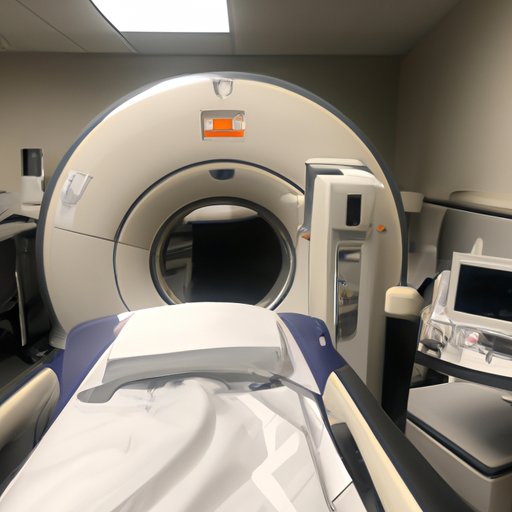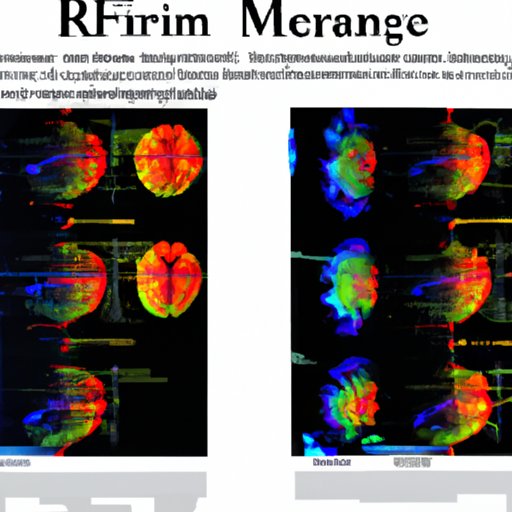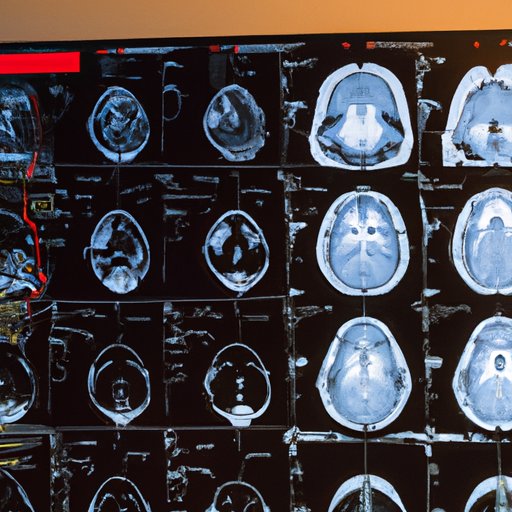Introduction
Functional magnetic resonance imaging (FMRI) is a key tool used in neuroscience research and clinical diagnosis. It allows researchers to observe changes in brain activity that occur when performing different tasks. By using this data, scientists can better understand the inner workings of the human brain and develop treatments for neurological disorders. FMRI has become increasingly popular in recent years, as it provides a non-invasive way to study the brain without using radiation.
What is Functional Magnetic Resonance Imaging (FMRI)?
Functional Magnetic Resonance Imaging (FMRI) is a type of brain scan that uses magnetic fields and radio waves to measure changes in blood flow to different parts of the brain. This scan is used to map out the areas of the brain that are activated while performing certain tasks or activities. The data collected during an FMRI scan can help researchers and medical professionals better understand the brain and diagnose various disorders.

Overview of the Benefits of FMRI
The primary benefit of FMRI is its ability to measure changes in brain activity with great accuracy and precision. This technology can be used to identify brain regions that are active during specific tasks and to monitor the effects of drugs on brain activity. It can also be used to diagnose diseases such as Alzheimer’s, Parkinson’s, and depression. Additionally, FMRI scans can provide valuable insight into the development of the brain in children and adolescents.
Exploring the Science Behind FMRI: How Does It Work?
In order to understand how FMRI works, you must first have a basic understanding of the technology behind it. FMRI relies on two main components: magnetic fields and radio waves. Magnetic fields are produced using a powerful magnet, which is usually placed inside an MRI machine. Radio waves are then used to measure changes in the magnetic field that occur when blood flow increases in certain areas of the brain.
The Basics of How FMRI Works
When a person is placed in the FMRI machine, they are exposed to a strong magnetic field. This magnetic field causes certain proteins in the brain to resonate, creating a signal that can be detected by the scanner. As the person performs certain tasks, the blood flow to certain parts of the brain increases. This increase in blood flow produces a change in the magnetic field, which is recorded by the scanner.
Understanding the Technology Behind FMRI
The technology behind FMRI is quite complex. The MRI machine contains a powerful magnet, which creates a strong magnetic field. This magnetic field interacts with the protons in the brain, causing them to resonate. Radio waves are then sent through the body and picked up by the scanner. These radio waves measure the changes in the magnetic field caused by increased blood flow in certain parts of the brain.
A Step-by-Step Guide to Understanding How FMRI Works
In order to understand how FMRI works, it is important to understand the steps involved in an FMRI scan. Here is a step-by-step guide to understanding the process:

Prepping for an FMRI Scan
Before an FMRI scan can take place, the patient must be prepped for the procedure. This includes wearing earplugs to protect against the loud noises that the MRI machine may produce. The patient must also be prepared for the length of the procedure, which can last anywhere from 30 minutes to several hours.
The Procedure for an FMRI Scan
Once the patient is prepped for the procedure, they will be asked to lie down on the MRI bed. The bed will then be slid into the MRI machine. During the scan, the patient will be asked to perform certain tasks while the MRI machine measures changes in the magnetic field caused by increased blood flow in certain parts of the brain.
Post-Scan Considerations
After the scan is complete, the patient will be asked to wait while the results are processed. Once the results are available, they can be used to identify areas of the brain that are active during certain tasks. This information can then be used to diagnose neurological disorders or to study the development of the brain in children and adolescents.
Deconstructing FMRI: How the Technology Unlocks Our Brains
Now that we’ve explored the basics of how FMRI works, it’s time to delve deeper into the technology and its potential applications. To do so, we must first understand the data that is collected during an FMRI scan.

Understanding the Data Collected During an FMRI
The data collected during an FMRI scan can be used to identify areas of the brain that are active during certain tasks. This data can then be used to diagnose neurological disorders or to study the development of the brain in children and adolescents. Additionally, it can be used to measure the effectiveness of certain drugs on brain activity.

Interpreting FMRI Results and Their Applications
Once the data from an FMRI scan has been collected and analyzed, it can be used to interpret the results. This data can then be used to develop treatments for neurological disorders or to gain a better understanding of how the brain functions. Additionally, this technology can be used to study the effects of drugs on brain activity.
Conclusion
Functional Magnetic Resonance Imaging (FMRI) is a powerful tool for studying the brain. It allows researchers to measure changes in brain activity with great accuracy and precision. This technology can be used to identify brain regions that are active during specific tasks and to monitor the effects of drugs on brain activity. Additionally, it can provide valuable insight into the development of the brain in children and adolescents. By understanding the steps involved in an FMRI scan, as well as the data that is collected during the scan, we can unlock the mysteries of the brain and develop treatments for various neurological disorders.
(Note: Is this article not meeting your expectations? Do you have knowledge or insights to share? Unlock new opportunities and expand your reach by joining our authors team. Click Registration to join us and share your expertise with our readers.)
